1. Language of the soul
‘The soul tries to establish communion with the world and with Paramatma (Supreme Soul) through the medium of the language of light and language of sound. Due to rays of light emerging from the soul the embodied soul gets a vision of different Deities. Due to sound vibrations being emitted by the soul an embodied soul hears different kinds of sattvik sounds.
2. Creation of sounds through
the union of five Cosmic Principles
When manifesting itself the soul influences the mind. Energy from the mind activates the subtle fire within the physical body. The subtle fire so ignited in the body comes in contact with subtle gases lying within the Brahma glands. This subtle gas enriched with the Absolute Earth Principle steadied within the Muladhar Chakra moves upwards and stagewise reaches the Swadishthan, Manipur, Anahat, Vishuddha, Adnya and Sahasrar Chakras in the path of Kundalini (dormant spiritual) energy and manifests through the voice. Vibrations of the soul manifest through vocal sounds. Contact of sound frequencies with frequencies from the manomay sheath (mental body) saturated with the Absolute Water Principle, initiates movement within them generating different waves within the mind which are referred to as bhav (spiritual emotion) or emotion. In this way by union of five Cosmic Principles sound is generated. Divine light and Divine sound manifest or are expressed through seven notes from Bharatiya classical music.
3. Bharatiya classical music
3A. Origin
Sound generated through the voice or through musical instruments when the mind is in a sattvik state, is sattvik and this sattvik sound is referred to as ‘Bharatiya classical music’.
3B. Special features
1. Music is a Divine art associated with God while studying music is prayer unto Him.
2. Music means listening to the voice of the soul and establishing communion with God.
3. An embodied soul derives spiritual experiences of positive energy, spiritual emotion, Divine Consciousness, Bliss and Peace.
4. Creation of seven musical notes
4A. Through guidance given by Panchamukhi Shiva
originated the Vedas, and through the high and low frequency sounds
uttered by Him originated the seven musical notes of Bharatiya classical music
According to a story from the Purans the seven musical notes originated from the Panchananan form of Panchamukhi Shiva through the rise and fall in sounds uttered by Him. The Vedas were created from the spiritual knowledge imparted by Panchamukhi Shiva. These seven notes form the basis of Bharatiya classical music. (Information on this story from the Puranas which has been lost due to passage of time has been received as subtle knowledge.’ – Miss Madhura Bhosale)
4B. Process of creating the seven musical notes
The Shrutis were created from Anahat Nad, then the Samaveda was created and from it were created the seven notes. It is from these seven notes that ancient Bharatiya classical music originated. From words uttered by Shiva were created the seven musical notes which are the basis of Bharatiya classical music. The father of the seven notes is Nataraj Shivashankar.
5. Different ragas from music
5A. Creation of ragas in music
5A1. Raga : Specific creation of a series of sounds with specific sound combination which acquires a colour, is called a raga. Specific subtle energy is derived from such sounds, generating subtle colour.
5A 2.Based on pronunciation of notes within ragas different ragas are created : When the seven notes are pronounced in a specific manner for example intense, moderate or mild specific ragas are created.
5A 3. Number of notes in ragas : The number of notes in ragas is 7 or even less. When notes are reduced to minimum too different ragas are created. Ragas Bhairav, Marva, Sohani, Puriya Lalit, Adana etc have 6 notes each while raga Yaman has 7 notes, ragas Malkansa and Durga have 5 notes each.
5A 4. Purnaraga and Svalparaga : A raga which has seven notes is called a purnaraga. Some ragas have five or even less notes and is called a swalparaga. This is terminology endowed to ragas by Spirituality.
5B. Special features of ragas in music
1. Every raga has a separate identity.
2. Different kinds of spiritual emotions and emotions are expressed through each raga.
3. Different ragas from music are deeply connected mutually.
4. Ragas from music are associated with the five Cosmic Principles, diurnal variation and seasonal variation.
5. Ragas are associated with different states of the mind.
6. A specific type of energy is emitted by every raga.
7. The subtle colour of every raga is different.
8. Ragas are associated with the science of Spirituality. Different ragas are associated with different Deities.
9. Musical sounds or seven notes are associated with five vital energies (panchapran) from the physical body.
10. As ragas from Bharatiya classical music are sattvik they have attained the Divine status.
5C. Different kinds of ragas from music
All ragas are interlinked. Allotting them a human form they have been categorised into male, female and son ragas. Considering ragas as God their families have been determined. In music 6 ragas are male, raginis are the wives of ragas and uparagas are considered as their sons. In this way Bharatiya classical music has in all 84 raga raginis.
5C 1. Purush ragas (Main ragas) : Bhairav, Malkansa, Hindol, Deepak, Shreeraga and Megharaj are the six main male ragas.
5C 2. Female ragas (raginis) : Every raga has five wives, hence total there are 30 raginis.
5C 3. Putraragas (uparagas) : Every raga has 8 sons, so total there are 48 sub-ragas.’
– Miss Madhura Bhosale (knowledge obtained from the subtle), Sanatan Ashram, Ramnathi, Goa (11.3.2018, 11.38 p.m.)

 A research by British University shows how music is useful to reduce pain and to...
A research by British University shows how music is useful to reduce pain and to...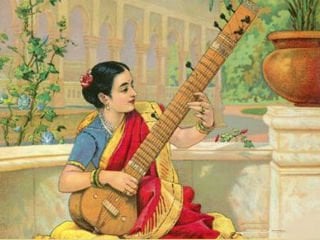 How to practice music ?
How to practice music ?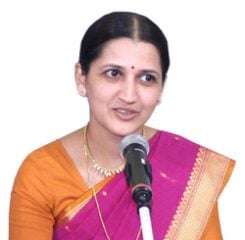 Guidance given by Paratpar Guru to Sadguru (Mrs.) Anjali Gadgil, from time to time regarding...
Guidance given by Paratpar Guru to Sadguru (Mrs.) Anjali Gadgil, from time to time regarding...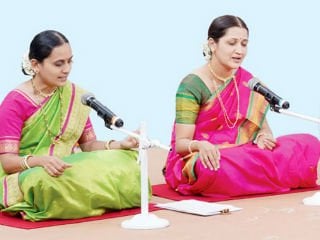 Invaluable guidance with respect to singing done by Sadguru (Mrs.) Anjali Gadgil
Invaluable guidance with respect to singing done by Sadguru (Mrs.) Anjali Gadgil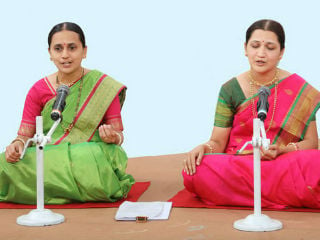 Science underlying the closure and opening of eyes of two lady seekers who sang at...
Science underlying the closure and opening of eyes of two lady seekers who sang at...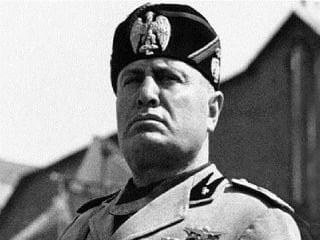 Italian dictator Benito Mussolini overcame sleeplessness by listening to Bharatiya Classical music
Italian dictator Benito Mussolini overcame sleeplessness by listening to Bharatiya Classical music